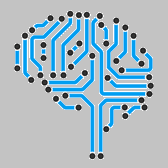
Cybersecurity is the most comprehensive job when it comes to IT-related challenges. Because applications are exposed to multiple users and deal with huge amounts of data, they are more prone to attacks. Most applications are protected through encrypted, state of the art firewalls that require authentication for data access, but applications are still vulnerable to theft and security risks.
Today, 87% of users are using mobile devices to access online data. To make mobile apps more secure, machine learning techniques, like deep learning, can be used. Deep learning has revolutionized the way data is stored, analyzed and interpreted and it will play a vital role in the evolution of mobile apps.
Deep Learning for Mobile Devices
Deep learning for mobile devices is used in two ways, inference and training. Large numbers of training datasets can be used to outline the parameters of training in the Deep Neural Network (DNN) during the training phase.If a DNN model is trained for a specific application, we can apply the same DNN model to inference tasks, such as identifying images that have never been seen.
Training a DNN containing millions of parameters can result in huge resource demands that can’t be handled by the limited ability of mobile devices.Using inferences can also affect mobile devices because the capacity of mobile chips is limited and using external sources consumes too much energy. To deal with these challenges, new algorithms and approaches are being used to align mobile devices with deep learning techniques and DNN usage.
DNN Networks Can Be Used in Three Ways for Mobile Devices
- Distributed Training:
Adjusting the parameters of the DNN training is the most important part of deep learning execution for mobile devices. The gradient descent algorithms and their variants are the most common algorithms for DNN training. To introduce distributed DNN training, the gradient descent algorithms need to be distributed. To accomplish this, you can use a Stochastic Gradient (SGD) algorithm that recognizes distributed and collaborative training by pulling data from different sources.
In this algorithm, users who contribute their data can train a DNN independently and concurrently. After each iteration, participants can upload gradients of selected parameters to a common global parameter server.
The sum of all the gradients collected from participants is used to determine the global parameters by the global parameter server. Users can download chosen global parameters to update their local DNN model. They can also create a local DNN model by the using data from other participants.
- Federated Training:
Federated training, developed by Google, enables mobile devices to train collaboratively to create a shared prediction model. All the training data can be kept on a device with decoupling ability for machine learning, which allows data storage on a device instead of in the cloud. It’s more effective to train a shared DNN while the user data is local.
With federated training, a user’s device downloads the current model and trains the model from the data on the device. It then logs of all the changes as a small update/gradient. This update/gradient is then sent to the cloud server, with encryption, where it is analyzed with the other user updates. Using the analyzed data, adjustments are made to the shared model.
- Privacy-Preserving Training:
The gradients or updates uploaded by users can reveal the features of local training data, which makes it vulnerable to powerful attacks. A concept called differential privacy is specifically tailored to the privacy-preserving data analysis. It is designed to provide a privacy guarantee for sensitive data.
Any algorithm can be differentially private if the probability of generating any one output has nothing to do with the presence of one data item in the input. Based on this approach, a designated deferentially private algorithm can provide collective representations about a set of data items without leaking information. The properties of differential privacy theory make it a foundation for designing privacy-preserving training approaches.
Cloud-based Inference for Mobile Devices
In this model, the lighter elements of the DNN are stored on a device, while the complex elements are offloaded to a cloud server. Data is first altered on the local device and then sent to the cloud server for further processing. This can create the risk for data exposure.
To avoid this exposure, the transformation is unsettled by both nullification and random noise, which satisfy the differentially private requirements. The unsettled representations are then transmitted to the cloud for more complex inferences.
Enterprises are developing their operating systems and applications based on these inference-based methods. Firms hire developers who can design applications that align with this type of cloud-based solution.
To improve the neural networks, both the raw training data and generative data are fed into the system. This is called the noisy method of inference.
Conclusion
Developing innovative ways to push deep learning in mobile devices has become a hot trend in cybersecurity. With new innovations in intelligent mobile devices and the Internet of Things, we will most likely see an increased use of deep learning techniques in cybersecurity applications and cybercrime prevention.
Several algorithms and techniques have already been developed to support deep learning for applications on mobile devices. Cybersecurity can be achieved more accurately and economically using these tools.
About the Author
Manoj Rupareliya is a Marketing Consultant and blogger who contributes various blogs. He has covered an extensive range of topics in his posts, including Business, Technology, Finance, Make Money, Cryptocurrency, and Start-ups.
